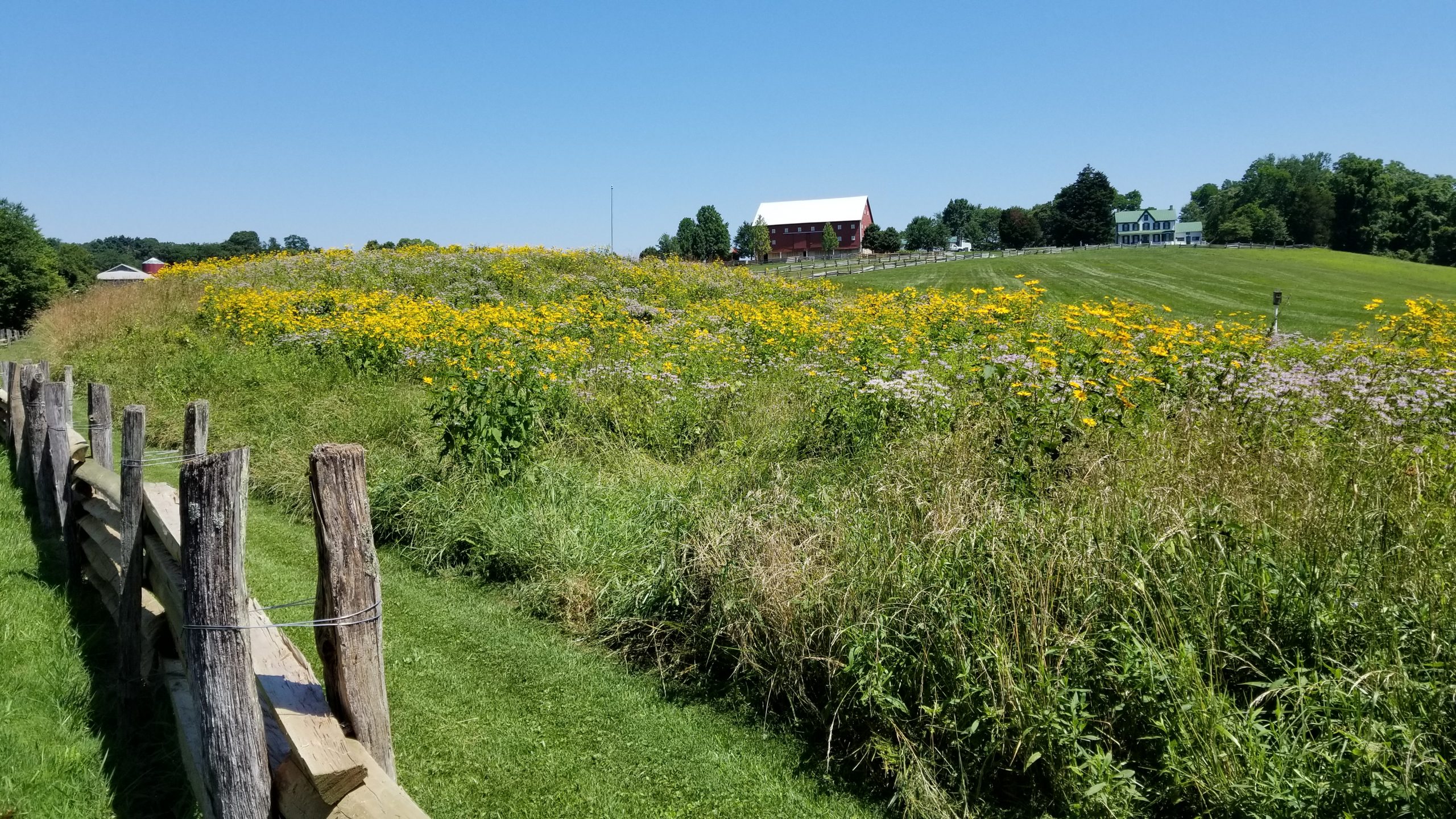
Montgomery Parks is increasing pollinators and native wildlife in its parks. Through its Meadow Management and Restoration Program, the department is seeing a resurgence of many new pollinator-friendly plants.
At Rachel Carson Conservation Park, which is located at 22201 Zion Road in
Olney, parks staff restored eight acres of a meadow over the past two years and plans to restore 12 more acres by the summer of next year.
“The goal of the restoration program is to increase native biodiversity to better support pollinators and native wildlife,” said Senior Natural Resources Specialist Dianna Loescher, who oversees Montgomery Parks’ Meadow Management and Restoration Program. “With this unique program we are boosting the health and resiliency of our native ecosystems through planting efforts.”
Rachel Carson Conservation Park is experiencing a reawakening of its meadow after the Meadow Management and Restoration Team removed invasive non-native plants, including Japanese stilt grass, Himalayan blackberry, autumn olive, Bradford pear, Japanese honeysuckle and mile-a-minute. With the invasive plants gone, pollinator-friendly plants have room to flourish.
As the meadow at Rachel Carson continues to flourish, the team will focus resources at other park locations to address the ongoing threat of invasive plants to local wildlife.
“By planting those species, we are creating a resilient native habitat,” said Ryan Colliton, a vegetation ecologist and principal natural resources specialist with the parks department. “Because it’s so diverse, it’s much more likely to deflect invasion by non-native invasive species. But we will always need to go back and check to make sure things aren’t reverting to the way they were.”
In some Montgomery County meadows, invasive species are so pervasive that there are widespread population declines of local pollinators such as bees, butterflies — including the giant swallowtail — and moths, namely the wavy-lined emerald moth, which uses Maryland’s State flower, the black-eyed Susan, as a host plant.
In 2020, the park’s meadow could not support many pollinators because it had just 15 different plant species. At its latest count, the number of plant species at Rachel Carson Conservation Park has almost tripled. Now there are about 40 different types of plants. Because the meadow is more diverse, pollinators have a consistent rotation of food sources as plants bloom at different times during the year.
The Vegetation Ecology and Management Unit removed non-native invasive plants and reintroduced pollinator-friendly plants at several other parks, including Sligo-Dennis Stream Valley, Meadowside Nature Center at Rock Creek Regional Park and Locust Grove Nature Center at Cabin John Regional Park.
Park visitors can see the revitalization at Rachel Carson Conservation Park with the blooming of native wildflowers such as daisy fleabanes and black-eyed Susans which are abundant during peak blooming seasons.
Inspired gardeners should check out the Native Plants for Wildlife Habitat and Conservation Landscaping: Chesapeake Bay Watershed guide from the U.S. Fish and Wildlife Service to learn about native plants that benefit pollinators.
Visit Meadow Management and Restoration Program for more information.
